
Welcome to “YES Week” – A Week Celebrating Our Associates’ Years of Exceptional Service
YES Week is about celebrating all associates by honoring their efforts, passion and devotion towards WGI’s continued success.
Learn from award-winning professionals — explore our whitepapers, blogs, and the latest industry updates.
Join our dynamic organization of engineers, land surveyors, landscape architects, environmental scientists, and architects!
Talk to a market leader today! We’ll answer any questions you have about our professional services.

Today, we are challenged with a lack of government spending in rehabilitation or replacement of our major infrastructure components, including roads, bridges, ports, transit systems, drinking water, and wastewater systems. Approximately 10% of U.S. bridges are structurally deficient. Recent estimates put the U.S. rehabilitation deferment at approximately $125 billion. One out of every five miles of highway pavement across the nation is in poor condition, increasing the number of highway accidents by 7 % in 2015 alone1. The American Water Works Association estimates that approximately $1 trillion will be necessary to maintain and improve service and meet demands over the next 25 years1. The COVID-19 pandemic will only exacerbate the problem over the next decade as many state agencies experience budgetary constraints. Effective use of funds to restore and maintain these infrastructures is directly correlated to how we go about our daily lives and how businesses operate.
Imagine the impact on the economy if most of our D- through F-rated bridges suffer major structural failures, making them unusable. How would that impact the logistic chain that delivers goods and services to our neighborhoods and cities? The fact is, we cannot solely depend on governmental spending to get us out of this situation. More private/public partnership should be developed at various levels of the infrastructure ecosystem for replacement and rehabilitation.
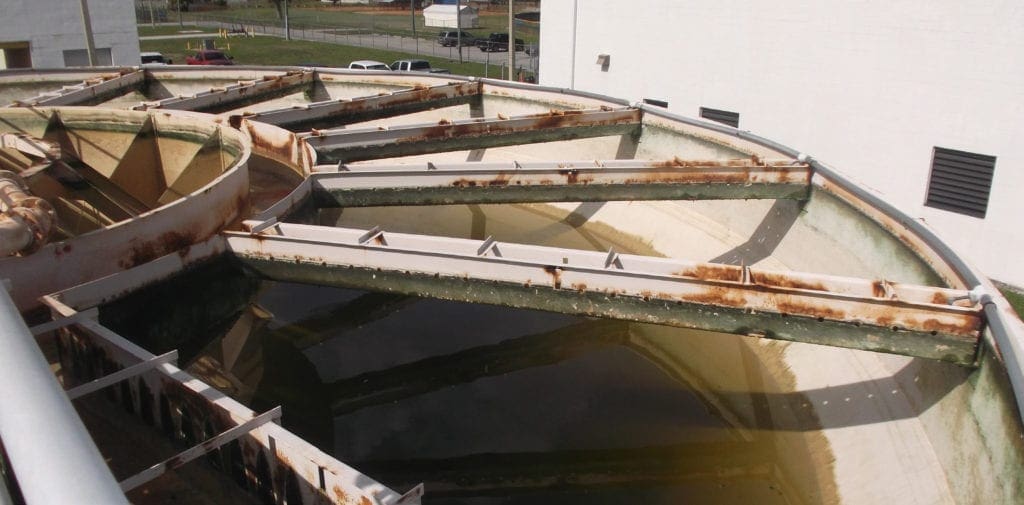
WGI forensic engineering professionals understand the need to partner with owners, developers, and property management firms to develop effective rehabilitation programs, delivering solutions that are long-term, cost-effective, and add value to the community. WGI is a national design and professional service firm providing comprehensive services over 15 divisions from civil engineering, geospatial, subsurface utility engineering, and transportation engineering through restoration engineering. The restoration and building enclosure group has completed more than 2,000 restoration projects across the United States. The projects vary in size, budget, complexity, and duration, but one thing remains unchanged — the expected outcome. Each rehabilitation project’s overall goal is to increase the longevity and serviceability of the structure.
Located in Charlotte, NC, a case study of the parking repairs at the BB&T Center parking structure provides an ideal opportunity to showcase the various approaches and methodologies that can and should be employed in a rehabilitation program. Success of any rehabilitation program is tied to developing a strong relationship with the facility’s owner or management. There are several different types of partnerships that can be developed; the most common in the A/E industry are joint ventures, Design-Build, public-private, equity partnership, and interdependent partnership, such as that between WGI and BB&T Center parking structure’s owner. Interdependent partnership is quite simple. Each firm requires the services or expertise of the other for a particular project to come to fruition. Success is only possible if each party clearly understands and agrees to its role in the project.
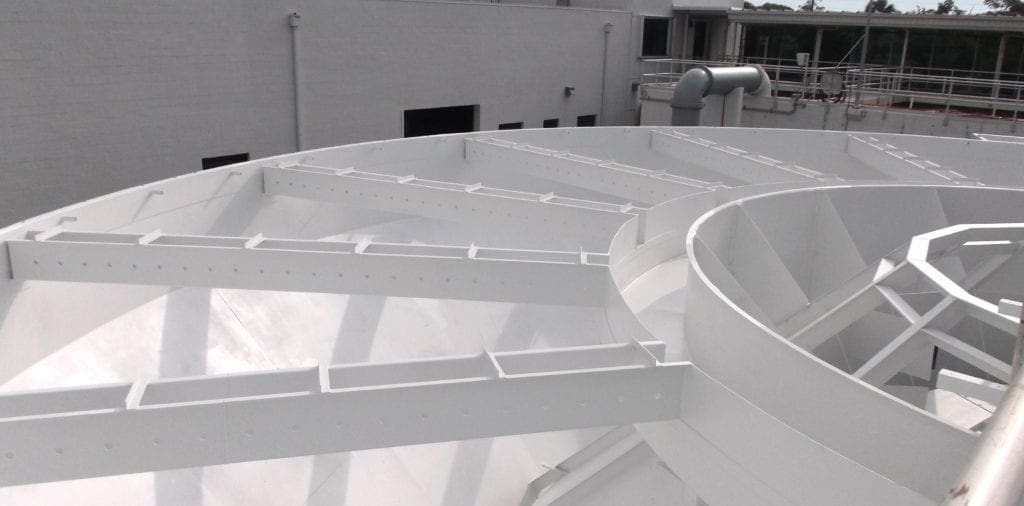
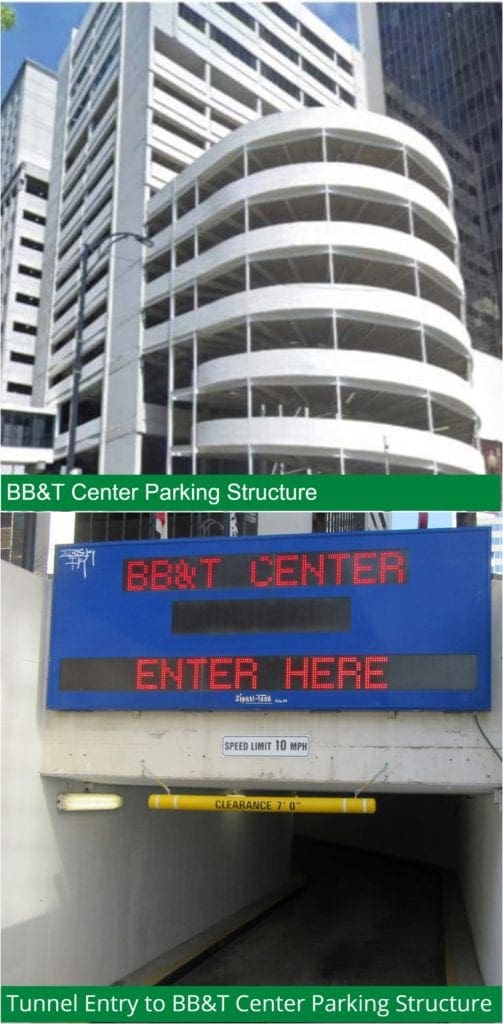
The BB&T Center parking structure (the deck) was constructed around 1975 in Uptown Charlotte, NC. The deck sits next to the BB&T Center Tower, contributing to the spectacular center city architecture and skyline. The deck contains approximately 1,520 parking spaces for garage users across 11 supported levels, and one level of slab-on-grade. The deck is accessed through one of three separate entries and exited via one of two underground tunnels. The exit tunnels discharge patrons along Third Street or S. College Street. Vertical circulation throughout the garage is achieved via a double-threaded helix ramping system, with the exterior circular helix serving as a speed ramp down from level 6 to level 1.
The parking deck floors are constructed with conventionally reinforced concrete slabs that are approximately five inches thick. The slabs are supported integrally with two-foot deep post-tensioned concrete joists supported by reinforced concrete columns. The exterior circular-helix ramp is constructed of six-inch thick reinforced concrete slabs supported by steel beams and columns.
The BB&T Center parking structure is perhaps the most unique parking structure in Uptown Charlotte due to its age, construction type, architecture, and proximity to shops, restaurants, and commercial space. Most parking structures are designed with a life expectancy of approximately 50 years. The life expectancy can be extended if appropriate routine maintenance and periodic repair programs are implemented. The deck was constructed 45 years ago and found to be in fair-to-moderate condition during WGI’s due-diligence review. A summary of a typical due-diligence review, with the deck as the basis of the discussion, is covered in greater detail in Section 3.
The development of a due-diligence report serves a vital part of the acquisition process of an asset like the BB&T Center parking structure. Gathering an asset’s tangible information (revenue potential, routine maintenance expenditures, critical infrastructure improvements, etc.) is vital to the owner’s sales-negotiation strategy. Understanding the need for the most accurate information of the structure’s current condition, the owner contacted WGI to aid with completing a due-diligence review of the facility. Now, you might be asking the following:
A parking structure due diligence is critical to the acquisition process, whether selling or buying the facility. Having the right firm completing the due-diligence review is vital. A parking structure due diligence usually happens in a short window; therefore, the team completing the review must be very experienced and technically competent in structural design and long-term performance of these types of facilities.
So, what is a due-diligence review? As it relates to parking structures, it is a timely engineering condition review of the parking structure to determine its condition related to the structural and waterproofing elements. The goal is to determine if the structure is performing as intended, based on initial design and adequate maintenance. The engineering review team employs various engineering methodologies (concrete-core extraction for chloride-ion testing, petrographic analysis, chain dragging, hammer sounding, and visual observations) to determine the structure’s current condition and forecast future maintenance programs necessary to keep the structure serviceable.
A team of experienced structural engineers with the appropriate forensic background is vital to extracting the right information during the field/on-site review. Once the field review is completed, the restoration team analyzes the gathered field information to develop recommendations for future repair programs. All items identified as needing repair are quantified and assigned an associated construction cost. The anticipated construction budgets are typically developed for 10- to 30-year periods depending on the structure’s age, and how long the owner intends to hold the asset. This is the most important information presented in the due-diligence review, as the acquisition team will use construction cost in its calculation of the net present value (NPV) of the asset.
Acquisition of the BB&T Center parking structure entailed a similar due-diligence process. The WGI team completed an engineering-condition assessment of the parking structure, providing a comprehensive report with observations, discussions, recommendations, and anticipated construction repair budgets to keep the structure serviceable over the next 10 years. WGI engaged in several discussions with the owner to identify critical-path items, value-engineering items, building-code required items, optional improvements, etc. These discussions were not only helpful to the owner developing its capital budget, but also the impact on future revenue streams during rehabilitation of the structure. The most important aspect of the due-diligence review is identifying current and future repair items for the owner when allocating financial reserves. It reduces any unplanned financial surprise.
Once the parking structure was acquired, WGI was immediately engaged to aid with developing construction documents for recommended repair items. Prior to agreeing on the scope of the work included in the repair program, WGI and the owner extensively discussed the following items:
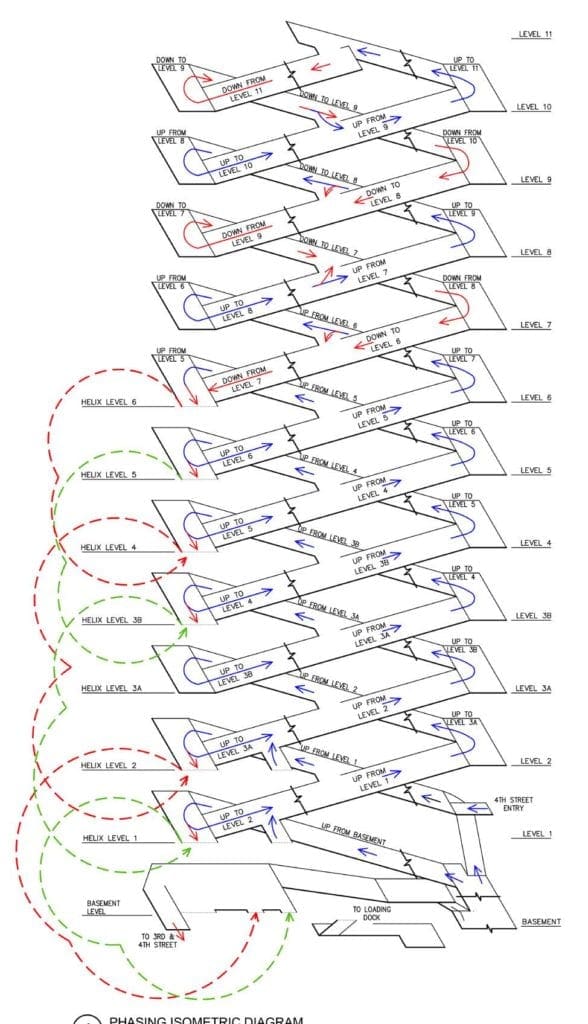
These questions were key to developing a successful repair program. From the designer’s perspective, this helps with narrowing the scope of work and defining the right amount of phasing that meets the client schedule. From the owner’s perspective, this helps with capital allocation, client notification of interruptions, and allocation for lost revenue. Unfortunately, the COVID-19 pandemic presented a conundrum in 2020. The owner viewed it as an overall opportunity. Level of users in the deck were reduced by over 50%, providing an opportunity to take more work area (additional parking spaces) during construction. Vital to most parking-structure repair programs is balancing the number of parking spaces taken out of service during construction, while creating an efficient workflow for the restoration contractor. With over 40 pages of drawing sheets in the construction set, there were eight pages dedicated to phasing, ensuring the structure remained serviceable and safe for users during construction.
As-built drawings are difficult to obtain for parking structures of this age and construction type. Fortunately, several sheets of existing drawings were available for review during construction-document development. Providing the parking structure’s overall framing dimensions, they were utilized while developing new CAD drawings that will serve the owner well into the future. During the design-development phase, preparation of restoration drawings and project specifications were periodically reviewed with the owner to ensure operational expectations and objectives were incorporated in the project. WGI and the owner periodically discussed the organizational requirements influencing the project’s success.
Answers to critical questions needed during design development included, but were not limited to:
Durability is a top priority with parking-structure rehabilitation. The restoration professionals at WGI understand this concept, taking it into consideration when developing restoration documents. Key to developing a durable design is a strong understanding of the mechanisms that lead to deterioration of steel, concrete, and waterproofing elements. WGI’s restoration professionals’ goal was extending the structure’s long-term performance at least an additional 15 to 20 years. To achieve this goal, the right scope of work must be completed, and that is only possible if the appropriate construction budget is approved. The owner achieved both. Major work items incorporated in the restoration project included:

Once the construction documents were approximately 90% complete, they were issued to the owner’s team for internal review and comments. A meeting then followed with the owner and WGI to review the design, focusing on phasing and scheduling to ensure everyone was on the same page with no pending surprises. WGI also presented a list of qualified bidders that were vetted for the project. This gave the owner an opportunity to add or remove firms from the list of bidders.
Once the bidding period was completed and pricing received, WGI compiled a bid-comparison spreadsheet to aid with their evaluation. Based on WGI’s experience, it is best to incorporate a combination of unit prices and lump-sum items in the bid form. This is helpful with increasing/decreasing the scope of work should allocated construction budgets change. This helped the owner ultimately select the microsilica-overlay alternate, providing a more durable repair than the base bid item, epoxy-sand overlay. Once the budget was finalized and a restoration contractor selected, it was on to construction.
We often refer to the construction phase as, “the rubber meeting the road.” Even if the construction documents are completely comprehensive, not having the right team and processes in place creates a high probability of failure. In engineering, we often use another phrase — “the devil is in the details” — having a set of guidelines and details that are practical and useful, and knowing how to interpret them. The other aspect to that is knowing how to interpret the detailed information. High Rock Waterproofing (High Rock), a local firm from Winston-Salem, NC, was selected to complete the repair project. Once the contractual agreements were executed between High Rock and the owner, and construction permit awarded by the county, the contractor mobilized knowing it had approximately six months to complete almost a million dollars of construction work.
Sound management processes are key to ensuring project completion per the design requirements and expectations of all involved parties. There are five simple attributes often utilized by WGI project teams to ensure successful execution of a project:
Throughout construction, the WGI team worked closely with the owner’s project manager, and the contractor’s project manager and parking manager, ensuring the project was executed in accordance with the permitted set of documents and owner expectations. The permit document required that the owner contract with a special inspection firm as the project’s secondary check. WGI utilized the special inspection firm to maximize the outcome for the owner and permit office.
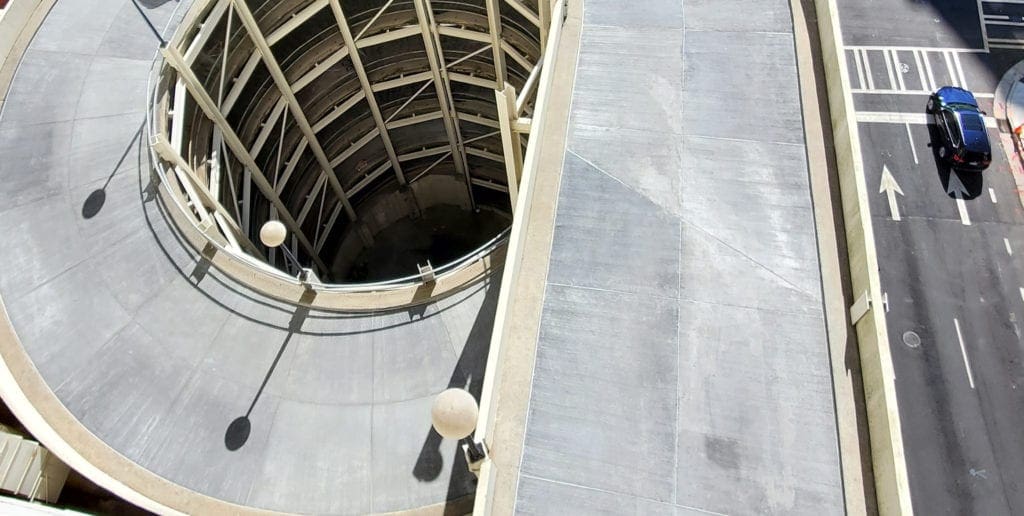
The most complex activities in this project included installation of the microsilica-concrete overlay on the exposed level of the exterior circular helix, and miscellaneous topside and overhead soffit slab spall on the other circular ramps. Microsilica, also known as silica fume, is a byproduct of electric arc furnace production of silicon or alloys. It is approximately 100 times smaller than cement particles. When silica fume is added to Portland cement concrete, it increases its compressive strength, tensile strength, and abrasion resistance. Microsilica is often used to resurface bridges. Microsilica overlay was used on the exposed level of the exterior helix ramp due to these attributes.
Exiting the deck’s upper levels required using one of two intertwined exterior circular-helix ramps. Overlay installation required closing off the circulation on one of the helixes for three weeks, which required reversing traffic flow on the interior double-threaded helix inside the deck. Once all miscellaneous concrete repairs and concrete overlay installed and bond tests accepted, the helix opened back to vehicular traffic while simultaneously taking helix number two offline from traffic.
Overall, the repair work on the circular helixes was completed within the expected duration. This was only achievable through adequate planning. WGI conducted several visits to review the preparation surface, developed unique checkerboard pattern for overlay placement to improve placement and limit cracking, and attended a pre-pour meeting with the concrete supplier, testing agency, special inspector, and contractor. Since this was the project’s inital and most-complex work activity, it allowed the team to develop a strong solidarity through the endeavor’s duration.
Having a client who understands the consultant’s value made it easy for WGI to execute a successful project. The same is true for the construction phase, selecting a qualified/experienced restoration contractor willing to take a team approach was also vital to the project’s overall success.
Parking structure restoration’s greatest challenge is developing an efficient project while limiting the number of parking spaces taken out of service during construction. As indicated previously, COVID-19 made this process much simpler since there were fewer patrons parking in the deck. However, since we took the circular helix offline at different times, we had to re-route traffic through the deck in the opposing direction. Having the correct message signs, strategically placed, was important because of drivers’ anticipated reaction time.
Initially, some construction signs were too small, not meeting the requirements set forth in the drawings. This was quickly corrected and improved upon based on suggestions from the parking-management company. No vehicular or pedestrian incidents were reported during construction. Unforeseen conditions are notorious in rehabilitation of any existing facility. Access to accurate existing as-built drawings is critical in navigating unforeseen conditions that can be detrimental to the project’s success. Even with good record drawings, it is always smart practice to complete on-site investigations requiring some destructive methods to ensure the existing drawings are accurate. Sharing this information with the client early in the process is also important. During the capital-budget development period with the owner, WGI ensured the construction budget had a line-item for contingency/allowance. These funds are used for typically occurring items often identified in the design phase. In most cases, unforeseen conditions relate to concrete-repair items. Typically, it’s when the increase in the quantity of repair area, or the existing reinforcement bars exhibit excessive section loss, requiring replacement or addition of supplemental bars.
The key to overcoming parking-structure restoration challenges is a team with the appropriate experience. Knowing what to expect and past dealings with common issues are vital in quickly reacting, and developing viable solutions. The restoration team at WGI is among the top-tier restoration/forensic engineers in the U.S.
Rehabilitation projects come in different sizes, budgets, durations, and complexities. A rehabilitation project’s successful implementation is heavily dependent on the selected firm’s experience and team of consultants. There are several occasions where WGI’s restoration and building façade group was contracted to aid in deciphering and reorienting rehabilitation projects not meeting client expectations and adequately addressing the facility’s deteriorations. Luckily, there are steps owners can take, ensuring their rehabilitation projects are destined for success.
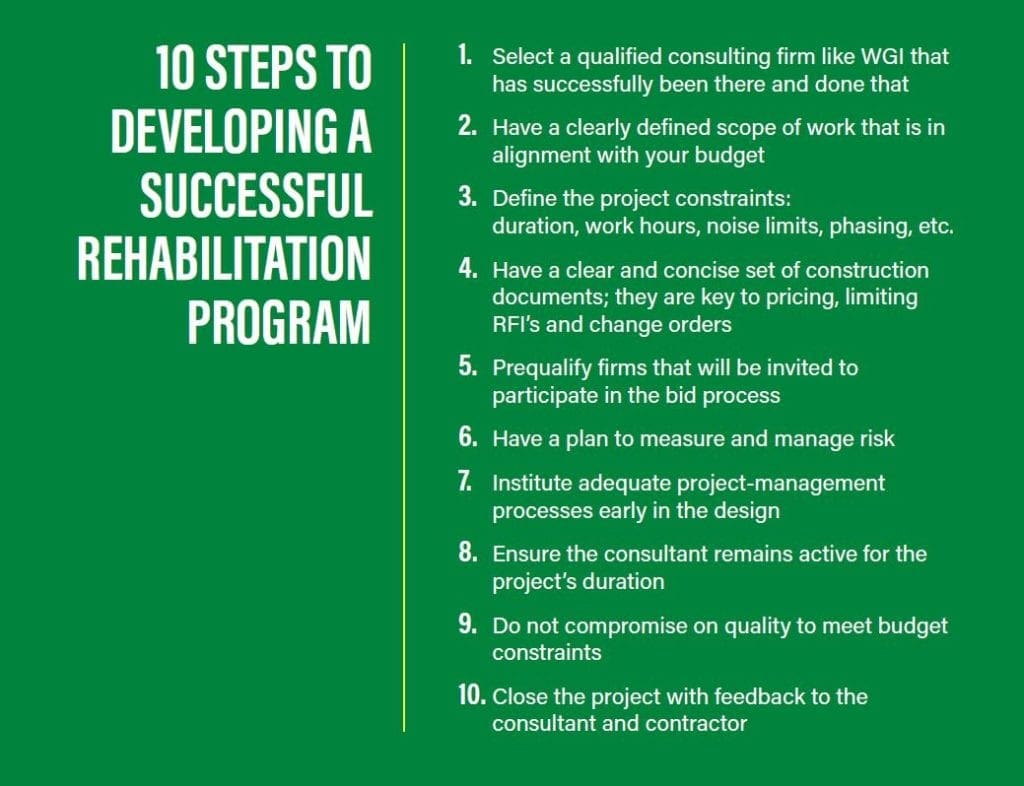
REFERENCE
1. Infrastructurereportcard.org; organization funded by ASCE Foundation
Project Representatives Acknowledgement: Cousins Properties (Russ Leverman), High Rock Waterproofing (Jeff Welty and Chase Gorgon), and WGI, Inc. (Andrew Kong, Attila Gergely, PE, Juan D. Sanchez, PE)
Sound management processes are key to ensuring your project is completed as expected and under budget. WGI’s restoration and forensic engineering team has implemented these practices into more than 2,000 of our completed projects across the United States, so we can put our experience to work for you. Contact our team today to get started.

WGI is a national design and professional services firm leading in technology-based solutions for the construction of public infrastructure and real estate development. At WGI, we’re providing Tomorrow’s Infrastructure Solutions Today.

YES Week is about celebrating all associates by honoring their efforts, passion and devotion towards WGI’s continued success.

Is your parking system “Smart”? Parking facilities are the first & last impression of customer service. Learn how to maximize efficiency & profitability of your operations when utilizing Smart Parking as you tailor the traveling experience for your customers and make sure that first & last impression is unforgettable.

Welcome back to WGI Unleashed! In this episode, we have the opportunity to chat with Jeremy Rocha, P.E., Senior Project Manager and Parking Solutions Expert.
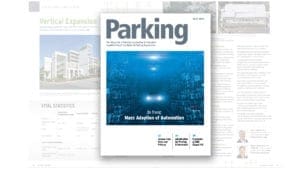
Read how WGI helped the University of North Carolina at Chapel Hill increasing parking capacity with limited disruption.
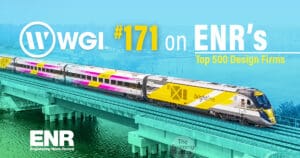
WGI was ranked in the top 200 for the tenth consecutive year by Engineering News-Record (ENR) on their Top 500 Design Firms List for 2024.
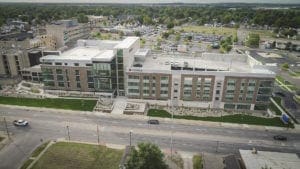
WGI recently completed the design and construction of the new Schneck Medical Center parking structure located in Seymour, IN.
You’ve been searching for a place like WGI. We look forward to meeting you soon.
Sign up to receive emails to hear our latest news and achievements in our monthly newsletter.
Enter your zip code, and we’ll personalize your experience with local projects, office locations, team members, and more.
WGI supports its associates with meaningful opportunities for growth, strong benefits and perks, while we work collaboratively with clients and co-consultants to shape and improve communities.






WGI is a dynamic organization with opportunities nationwide for engineers, land surveyors, landscape architects, environmental scientists, and architects.